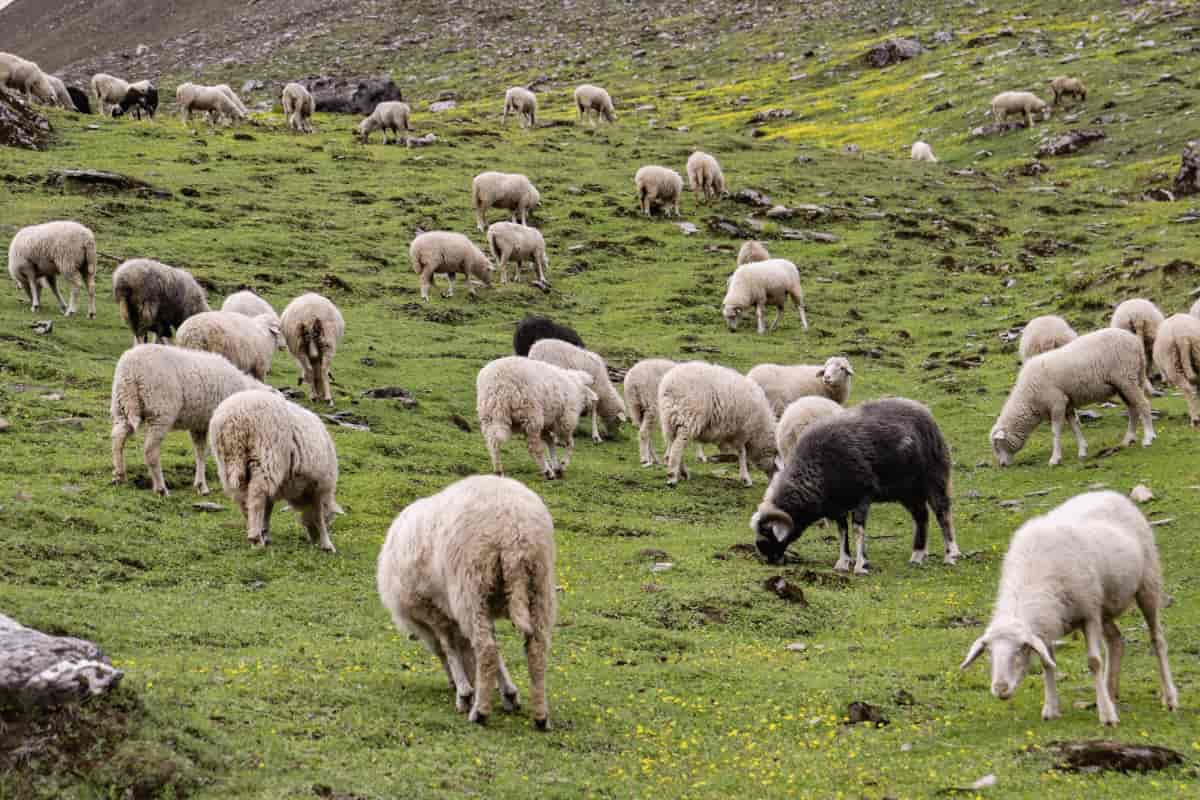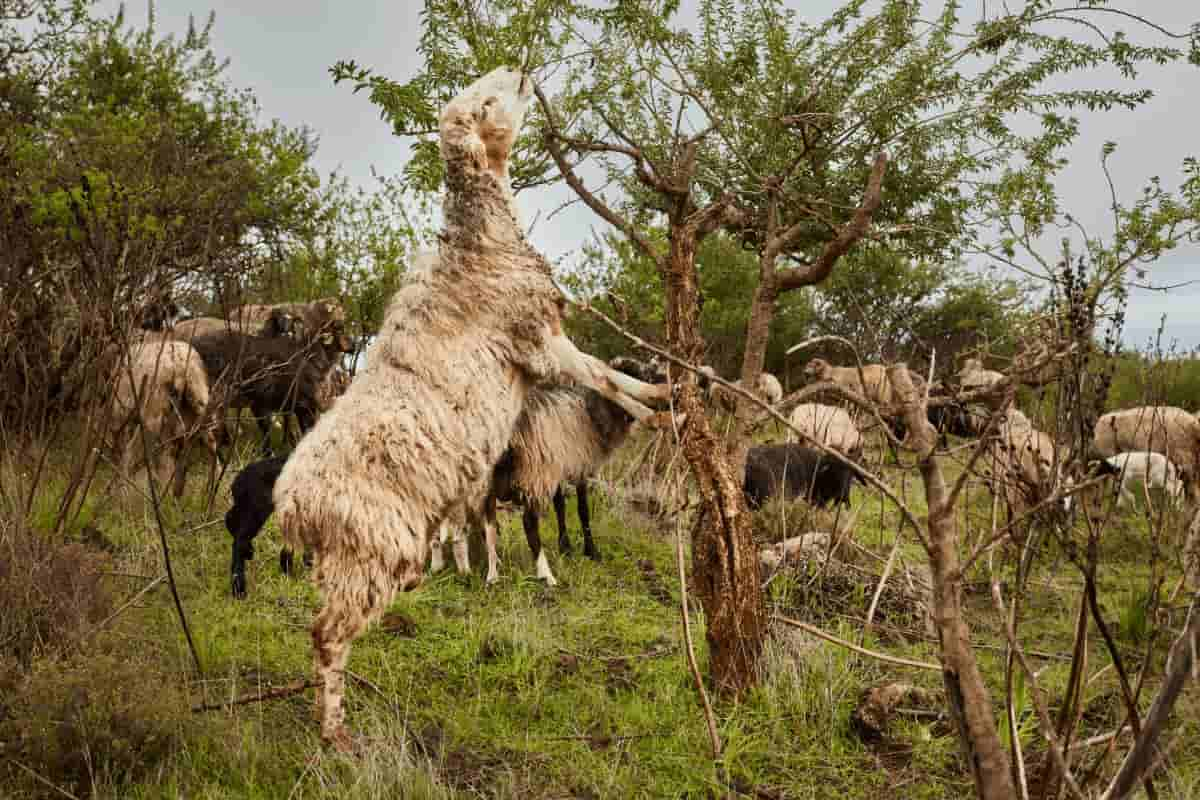Bergamasca Sheep stands as a cornerstone in the realm of sustainable farming, blending a rich heritage with a suite of desirable traits, including Bergamasca wool production and meat quality. Originating from Italy, these sheep are a beacon for those venturing into raising Bergamasca Sheep, thanks to their adaptability, robust health, and manageable Bergamasca Sheep care.

The journey from starting a Bergamasca Sheep farm to mastering the nuances of their diet, habitat, and breeding encapsulates a rewarding endeavour for modern farmers. Emphasising sustainability, the practices surrounding these sheep, from their diet to breeding, echo a commitment to ecological stewardship and conservation, ensuring their role in agriculture and maintaining biodiversity.
Bergamasca Sheep
Origin and History
The tapestry of Bergamasca Sheep’s history is woven through the pastoral landscapes of Italy, where centuries-old traditions have carved the breed’s resilience and adaptability. This storied past, rich with cultural and agricultural intertwinings, positions the Bergamasca as a breed of historical significance and contemporary relevance.
Breed Overview
Characterised by their resilience and adaptability, Bergamasca Sheep is a linchpin in diverse farming setups, celebrated for their contributions to wool, meat, and sustainable practices. Their hardy nature and social tendencies make them an invaluable addition to farms aiming for ecological balance and productivity.
The uses of Bergamasca Sheep are diverse, ranging from their high-quality wool production to their nutritious meat, making them a valuable resource in agriculture. These uses of Bergamasca Sheep underscore their significance in sustainable farming practices and the broader agricultural sector.
Bergamasca Sheep Price
The investment in Bergamasca Sheep varies, with factors like lineage, age, and breeding capabilities influencing the price. Typically, one might expect to invest anywhere from $200 to $500 for a standard individual, with breeding stock potentially reaching upwards of $1000.
Bergamasca Sheep Lifespan
Bergamasca Sheep, with a lifespan of 10 to 12 years, offer farmers a sustained opportunity for wool production and breeding initiatives, enhancing farm productivity over an extended period.
Physical Characteristics of Bergamasca Sheep
Size and Build
Adult Bergamasca Sheep exhibit a robust physique, with rams weighing about 220-275 pounds (100-125 kg) and ewes slightly lighter at 180-220 pounds (80-100 kg). Their substantial dimensions underscore their robustness and durability, rendering them highly adaptable for diverse agricultural requirements.
Coat and Color
The hallmark of the Bergamasca is its luxurious, dense and durable wool, often in shades of white to light grey, prized for its quality and texture in the wool industry.
Behavioural Traits
- Social Behavior: Inherently gregarious, Bergamasca Sheep thrive within the dynamics of the flock, their social structures playing a pivotal role in their overall well-being and stress management.
- Adaptability: The breed’s hallmark adaptability allows it to flourish across various climates and conditions, making Bergamasca Sheep a versatile choice for farmers worldwide.
Habitat Requirements
- Ideal Environmental Conditions: Bergamasca Sheep are versatile, thriving in environments that balance pasture access with adequate shelter, showing resilience in temperate and harsher climates.
- Shelter and Space Needs: To ensure the health and well-being of the Bergamasca Sheep, adequate shelter from extreme elements and ample space for grazing and social interaction are non-negotiable, providing a foundation for a thriving flock.
In case you missed it: Perendale Sheep Facts: Ultimate Guide to Breeding, Raising, and Care

Diet and Nutrition
Essential Nutrients: An optimal combination of proteins, vitamins, and minerals is essential for maintaining the health and productivity of Bergamasca Sheep, contributing significantly to factors like wool quality and overall well-being.
Feeding Schedule and Diet Management
| Time of Day | Feed Type | Quantity |
| Morning | Pasture/Forage | As available |
| Noon | Supplemental Feed | 0.5 lbs per head |
| Evening | Hay | 1-2 lbs per head |
Health Management
- Common Health Issues: Vigilance is key in managing the health of Bergamasca Sheep, with common concerns including parasites, foot rot, and respiratory conditions necessitating a proactive approach to care.
- Preventive Care and Treatments: A regimen of vaccinations, regular deworming, and routine health checks form the cornerstone of preventive care, ensuring the longevity and well-being of the Bergamasca flock.
Breeding Practices
Reproduction Cycle
| Stage | Duration | Notes |
| Estrus | 24-36 hours | Optimal breeding time |
| Gestation | 5 months | Approx. 150 days |
| Weaning | 3-4 months | Transition to solid foods |
Managing Breeding Stock: The sustainability of a Bergamasca flock hinges on carefully selecting and managing breeding stock, prioritising genetic diversity, health, and productivity to ensure the breed’s future.
Wool Production
Wool production in Bergamasca Sheep is a hallmark of their agricultural value, with these sheep yielding an impressive amount of wool annually, often ranging from 6 to 10 kilograms per sheep. This substantial yield underscores the breed’s significance in the wool industry, contributing to local and global markets.
Wool Characteristics: The wool of Bergamasca Sheep is renowned for its durability and lustre, characterised by a medium to coarse grade that makes it ideal for various textile applications. The staple length typically ranges from 4 to 6 inches, with a micron count that places it in the strong wool category, making it highly sought after for products requiring resilience and warmth.
Harvesting and Processing: Wool harvesting from Bergamasca Sheep is typically conducted yearly during the spring, ensuring minimal animal stress and maximising the fleece quality. Post-shearing, the wool undergoes processing which includes cleaning, carding, and spinning, transforming raw fleece into usable woolen products, a process underscores the breed’s contribution to sustainable wool production.
In case you missed it: Everything about Devon Longwool Sheep: Characteristics, Uses, and Raising Facts

Meat Production
Bergamasca sheep are prized not only for their wool but also for their meat, which is recognised for its flavour and quality. The breed contributes to the meat industry by producing lamb and mutton, providing a sustainable source of protein.
Meat Quality and Characteristics: The meat from Bergamasca Sheep is distinguished by its tenderness and rich flavour, making it a favoured choice in culinary circles. The breed’s extensive grazing habits contribute to the lean, flavorful quality of the meat, making it a healthy and nutritious option.
Slaughter and Processing: Slaughter and processing of Bergamasca Sheep are conducted with a focus on humane practices and quality preservation. The process, from slaughter to packaging, is meticulously crafted to preserve the meat’s quality, guaranteeing optimal condition for consumers and upholding the breed’s significance in the meat industry.
Conservation and Sustainable Practices
The conservation of Bergamasca Sheep involves preserving their genetic diversity, a key factor in the breed’s adaptability and resilience. These efforts are crucial for maintaining the breed’s health and viability, ensuring that Bergamasca Sheep continue to contribute to agricultural biodiversity.
Genetic Diversity and Preservation: Maintaining the genetic diversity of Bergamasca Sheep is essential for the breed’s long-term survival and adaptability to changing environmental conditions. Conservation programs and breeding practices are geared towards preserving this diversity, ensuring a robust gene pool for future generations.
Role in Sustainable Agriculture: Bergamasca Sheep play a pivotal role in sustainable agriculture through their efficient grazing, which promotes soil health and biodiversity, and their dual-purpose nature, providing wool and meat. Their adaptability and low-input needs make them an exemplary model for sustainable livestock farming, contributing to the health of agricultural ecosystems and the viability of farming communities.
In case you missed it: Latxa Sheep Breed: History, Characteristics, Price, Size, Breeding, and Raising

Conclusion
Bergamasca Sheep offers a wealth of benefits for sustainable farming through their versatile wool and meat production and their contribution to genetic diversity and ecosystem health. Their adaptability and resilience make them a valuable asset to farmers worldwide, embodying a sustainable agriculture approach that supports the environment and the economy.
Note: The images presented in this post are intended solely for representation purposes. The images are meant to serve as visual aids and should not be relied upon as accurate representations of their real-life counterparts.
- Feed Your Flock for Less: Top 10 Tips to Save on Chicken Feed
- Ultimate Guide to Ossabaw Island Hog: Breeding, Raising, Diet, and Care
- Hatching Answers: The Top 10 Reasons Your Chickens Aren’t Laying Eggs
- Eggs and Economics: Breaking Down the Cost of Raising Backyard Chickens
- Defend Your Greens: Proven Methods to Keep Iguanas Out of Your Garden
- Ultimate Guide to Cinnamon Queen Chicken: A Comprehensive Guide for Beginners
- Ultimate Guide to California Tan Chicken: Breeding, Raising, Diet, Egg-Production and Care
- Ultimate Guide to Marsh Daisy Chicken: Breeding, Raising, Diet, and Care
- 10 Types of Chicken Farming Businesses You Can Start for Profits